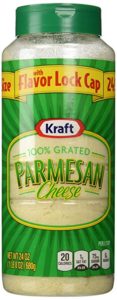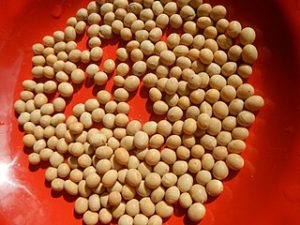Veganism is the practice of not eating any animal related products. It can be taken a step further and include not using any products, which contain material taken from animals. This is something more than standard vegetarianism, which is generally just not eating meat. Indeed, the term vegan was born in 1944 when some members of the Vegetarian Society in Great Britain decided to give up dairy products as well and formed the word 'vegan' by abbreviating 'vegetarian', in order to refer to their new approach to eating.
There are a number of reasons why people adopt veganism. One of the main ones is due to the potential health benefits of consuming a natural, low-fat diet based on plant products. There could be other reasons, such as in the case of people who react badly to certain animal-based products (for example lactose found in milk) and so need to avoid eating them. Some people want to fight against cruelty to animals, to promote a green lifestyle, or simply belong to a religious group that believes in veganism.
Whatever the reasons for veganism, one thing's for sure and that's that it's on the rise! Statistics show that many countries in the world have at least a small percent of the population who are vegan. In Great Britain for example, the number of vegans has grown from 150,000 in 2006 to 542,000 in 2016.
Obviously, if someone converts to a vegan diet it will mean giving up a lot of the foods that they enjoy and are used to eating. However, these days, due to the popularity of veganism there exist many plants based alternative foods that people can include in their diets. Following on, we are going to look at just one example, that of a vegan substitute for Parmesan cheese.
 Parmesan, the king of cheese toppings
Parmesan, the king of cheese toppings
Parmesan is a cheese well-known for its use in grated form as a topping for many dishes in order to add flavor. The authentic Italian version of Parmesan cheese is called, 'Parmigiano-Reggiano'. This is a hard cheese, which has been produced for hundreds of years in certain regions of Italy. Its hardest and crystalline texture combined with strong pleasant taste is what makes it is ideal for grating and adding to dishes as a flavoring.Buying original Parmigiano-Reggiano cheese produced in Italy can be expensive due to a number of reasons; it can only be produced by manufacturers in certain regions of Italy; it undergoes a traditional, well-controlled manufacturing process and finally, once made has to be shipped out all over the world for sale. As a result of this, a number of cheaper alternative Parmigiano-Reggiano style cheese exist, which are cheaper and generically known as Parmesan cheese.
Soybeans to the rescue.
Soybeans were cultivated in East Asia long before records even began and gradually over the centuries their cultivation has spread throughout the world. Initially, their use was more for practical purposes, such as in crop rotation due to the fact that the soybean plants helped renitrogenese soil. Also, they were used in animal feed. Gradually though, people been to discover and appreciate their many other uses as a food substance.
centuries their cultivation has spread throughout the world. Initially, their use was more for practical purposes, such as in crop rotation due to the fact that the soybean plants helped renitrogenese soil. Also, they were used in animal feed. Gradually though, people been to discover and appreciate their many other uses as a food substance.Soybeans are an excellent source of protein and can be used as a meat substitute due to the fact that they contain a good spread of proteins, such that by consuming them someone obtains the proteins they need without having to worry too much about eating other foods. For this reason, they are a good option for vegans who are in danger of lacking proteins in their diet as a result of not eating meat or dairy products.
By boiling soybeans and then filtering the product soy milk can be produced. Yogurt or a yogurt starter can then be added to this milk, which after being left to stand in a warm place, will start to separate into liquid and solid, mimicking the process of curdling cheese. The curd produced can be used just like any other cheese, giving rise to, amongst other things, the possibility of Parmesan cheese suitable for vegans.
Almonds, a nutty alternative
As well as beans such as soy, nuts are also a good source of protein for vegans. This is good news for vegan cheese lovers as nuts can be very easily blended into a cheese-like food that can be used in many ways.In the case of almonds, they are simply blanched (that is to say boiled briefly in water and then cooled and the skin removed), and then blended in a blender with nutritional yeast, salt, and garlic powder until a fine powder is formed. This can then be stored and used to sprinkle on food as an excellent alternative to Parmesan cheese.
Cashews, a nutty alternative to the nutty alternative
The above mentioned Parmesan cheese using almonds can just as easily be made using cashew nuts. The method and ingredients are identical except that cashews replace the almonds and so the process is slightly simpler as the cashews don't need to be blanched. It is even possible to use a mixture of blanched almonds and cashews to produce a nut combination Parmesan.No need for vegans to miss out
As we have seen, it is quite possible for vegans to enjoy the taste of Parmesan cheese on pasta, pizzas and the like. There are a number of commercial products available that imitate well Parmesan cheese, but use plant-based ingredients such as soybean, almonds or cashews. Those of us, who for whatever reason are following a vegan diet can try out some of these commercial products to see which one is most to their liking. But, as these vegan substitute Parmesan cheese are so easy to make, it's also worth trying to make your own at home. By experimenting you can come up with your perfect combination and never have to miss out on that Parmesan cheese goodness again!Feel free to leave below any experiences or suggestions you have regarding alternative Parmesans.



